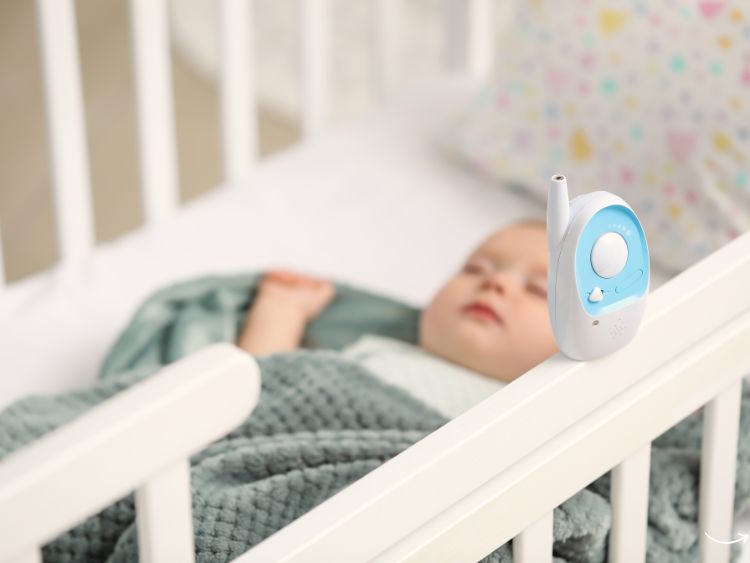Why Every Parent Needs a Baby Monitor
Let’s face it—parenting can be nerve-wracking, especially when you’re not in the same room as your baby. That’s where a baby monitor swoops in to save the day (and your sanity). Whether it’s keeping an ear out for cries or checking on them during nap time, a baby monitor gives you peace of mind. But, with so many options out there, how do you choose the right one?
This guide will walk you through everything you need to know about baby monitors—from types and features to tips on proper placement. Let’s dive in, shall we?
What Is a Baby Monitor?
A baby monitor is a device designed to help parents remotely keep an eye (or ear) on their baby. These handy gadgets typically include a transmitter placed near the baby and a receiver for the parent. Modern monitors often come with advanced features like video streaming, temperature sensors, and even lullabies.
Key Benefits of Using a Baby Monitor
- Peace of mind: You can relax knowing you’ll be alerted to any unusual sounds or movements.
- Multitasking: Monitor your baby while handling chores, working, or catching up on sleep.
- Safety: Some monitors have motion or breathing sensors that can detect potential issues early.
Types of Baby Monitors
When it comes to baby monitors, there’s no one-size-fits-all. Let’s break down the different types:
1. Audio Monitors
The classic choice, audio monitors let you hear your baby’s sounds. They’re simple, budget-friendly, and perfect if you’re not keen on extra features.
2. Video Monitors
These include a camera and a display screen, so you can see your baby in real time. Some models even offer night vision and pan-and-tilt capabilities.
3. Smart Monitors
Welcome to the future! Smart monitors connect to your phone or tablet via an app, offering features like heart rate tracking, movement alerts, and HD video streaming.
4. Wearable Monitors
These attach to your baby’s clothing or diaper to track vitals like breathing or oxygen levels. They’re great for extra peace of mind but can be pricey.
Features to Look for in a Baby Monitor
Not all baby monitors are created equal. Here’s a checklist of must-have features:
- Range
Ensure the monitor has a sufficient range to cover your home. Walls and floors can affect signal strength. - Battery Life
Opt for a model with long-lasting batteries or rechargeable options. - Video Quality
For video monitors, crystal-clear visuals are a game-changer, especially at night. - Two-Way Communication
This feature lets you talk to your baby through the monitor—perfect for soothing them remotely. - Temperature Sensors
Some monitors display the room temperature, so you can ensure it’s cozy for your baby. - Privacy & Security
Look for encrypted signals to prevent hackers from accessing your monitor.
Tips for Setting Up Your Baby Monitor
Placement matters when it comes to getting the most out of your monitor. Follow these tips:
- Choose the Right Spot
Place the monitor 3–6 feet away from the crib to avoid interference and ensure a clear view. - Secure the Cords
Keep cords out of reach to prevent any strangulation hazards. - Test the Signal
Walk around your home with the receiver to check for dead zones. - Avoid Overloading Wi-Fi
If you’re using a smart monitor, ensure your internet connection is stable.
Top Baby Monitor Brands in 2024
Here are some reliable brands that parents swear by:
- Infant Optics DXR-8 Pro: Known for its excellent video quality and privacy features.
- Owlet Smart Sock Plus: Tracks your baby’s vitals with impressive accuracy.
- Motorola MBP36XL: A solid option with a large screen and remote pan-and-tilt.
- Nanit Pro: Offers sleep tracking and insights for data-loving parents.
FAQs About Baby Monitors
- Do I really need a baby monitor?
If your baby sleeps in a separate room or if you’re a heavy sleeper, a baby monitor is a game-changer. It’s all about peace of mind. - Are baby monitors safe to use?
Yes, as long as you follow safety guidelines like keeping cords out of reach and securing the monitor properly. - How much should I spend on a baby monitor?
Prices range from $50 to over $300. Choose based on your needs and budget—fancier isn’t always better. - Can baby monitors be hacked?
Unfortunately, yes. To prevent this, pick a monitor with encrypted signals and regularly update its firmware. - Do I need Wi-Fi for a baby monitor?
Not necessarily. Non-Wi-Fi models work independently and are less vulnerable to hacking.
Conclusion: Making the Right Choice
A baby monitor is more than just a gadget—it’s a parenting lifeline. Whether you’re a tech enthusiast or someone who prefers simplicity, there’s a perfect monitor out there for you. By understanding the types, features, and proper setup, you’ll be ready to pick the one that suits your family’s needs.
Remember, the goal is to ensure your baby’s safety and give yourself some much-needed peace of mind. Happy parenting!

